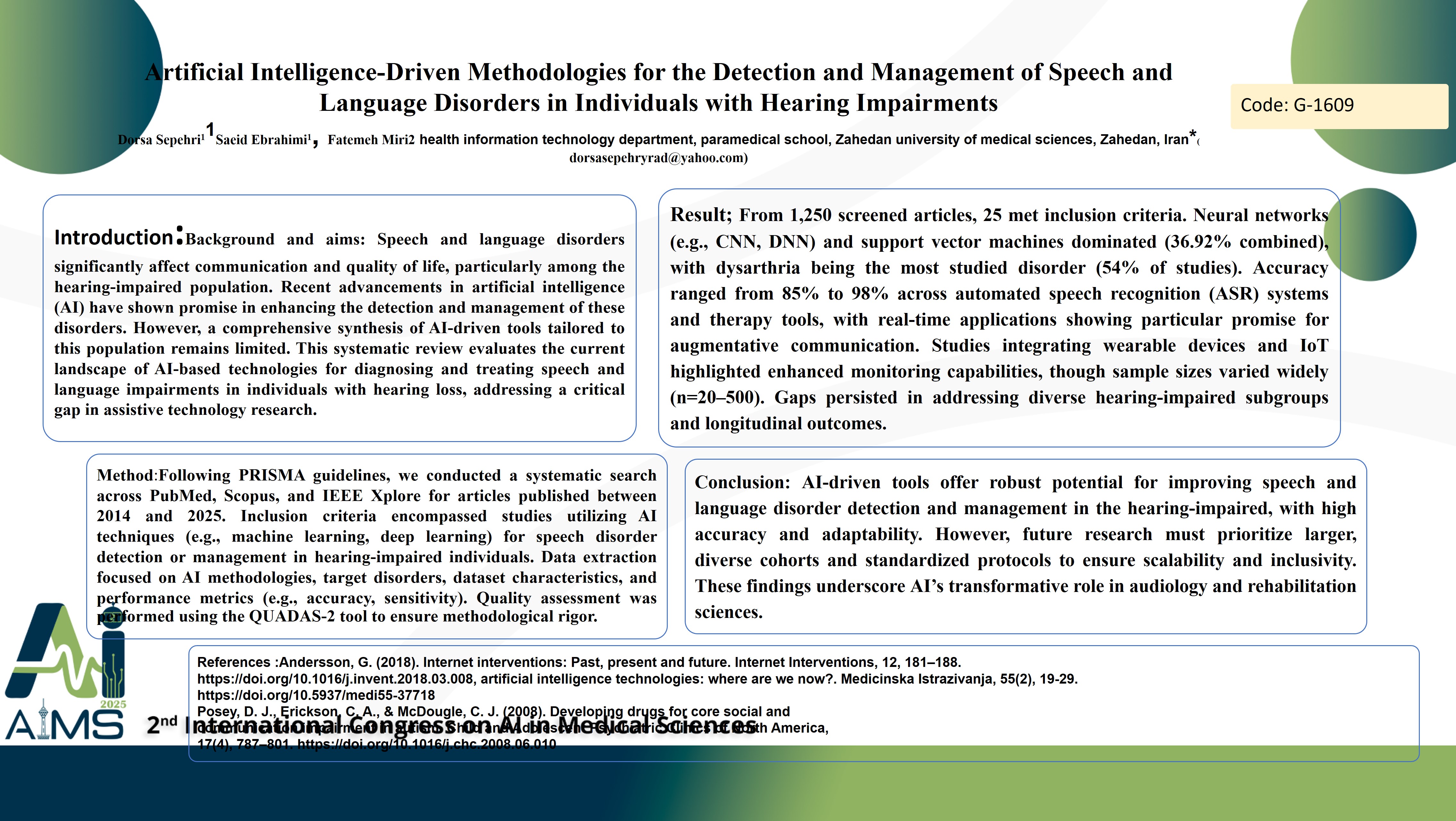روشهای مبتنی بر هوش مصنوعی برای تشخیص و مدیریت اختلالات گفتار و زبان در افراد دارای آسیبهای شنوایی
کد: G-1609
نویسندگان: Dorsa Sepehry Rad *, Saeid Ebrahimi , Fatemeh Miri ℗
زمان بندی: زمان بندی نشده!
برچسب: سلامت همراه و دورا پزشکی
دانلود: دانلود پوستر
خلاصه مقاله:
خلاصه مقاله
Background and aims: Speech and language disorders significantly affect communication and quality of life, particularly among the hearing-impaired population. Recent advancements in artificial intelligence (AI) have shown promise in enhancing the detection and management of these disorders. However, a comprehensive synthesis of AI-driven tools tailored to this population remains limited. This systematic review evaluates the current landscape of AI-based technologies for diagnosing and treating speech and language impairments in individuals with hearing loss, addressing a critical gap in assistive technology research. Method: Following PRISMA guidelines, we conducted a systematic search across PubMed, Scopus, and IEEE Xplore for articles published between 2014 and 2025. Inclusion criteria encompassed studies utilizing AI techniques (e.g., machine learning, deep learning) for speech disorder detection or management in hearing-impaired individuals. Data extraction focused on AI methodologies, target disorders, dataset characteristics, and performance metrics (e.g., accuracy, sensitivity). Quality assessment was performed using the QUADAS-2 tool to ensure methodological rigor. Results: From 1,250 screened articles, 25 met inclusion criteria. Neural networks (e.g., CNN, DNN) and support vector machines dominated (36.92% combined), with dysarthria being the most studied disorder (54% of studies). Accuracy ranged from 85% to 98% across automated speech recognition (ASR) systems and therapy tools, with real-time applications showing particular promise for augmentative communication. Studies integrating wearable devices and IoT highlighted enhanced monitoring capabilities, though sample sizes varied widely (n=20–500). Gaps persisted in addressing diverse hearing-impaired subgroups and longitudinal outcomes. Conclusion: AI-driven tools offer robust potential for improving speech and language disorder detection and management in the hearing-impaired, with high accuracy and adaptability. However, future research must prioritize larger, diverse cohorts and standardized protocols to ensure scalability and inclusivity. These findings underscore AI’s transformative role in audiology and rehabilitation sciences.
کلمات کلیدی
AI-driven tools, speech disorders, language
